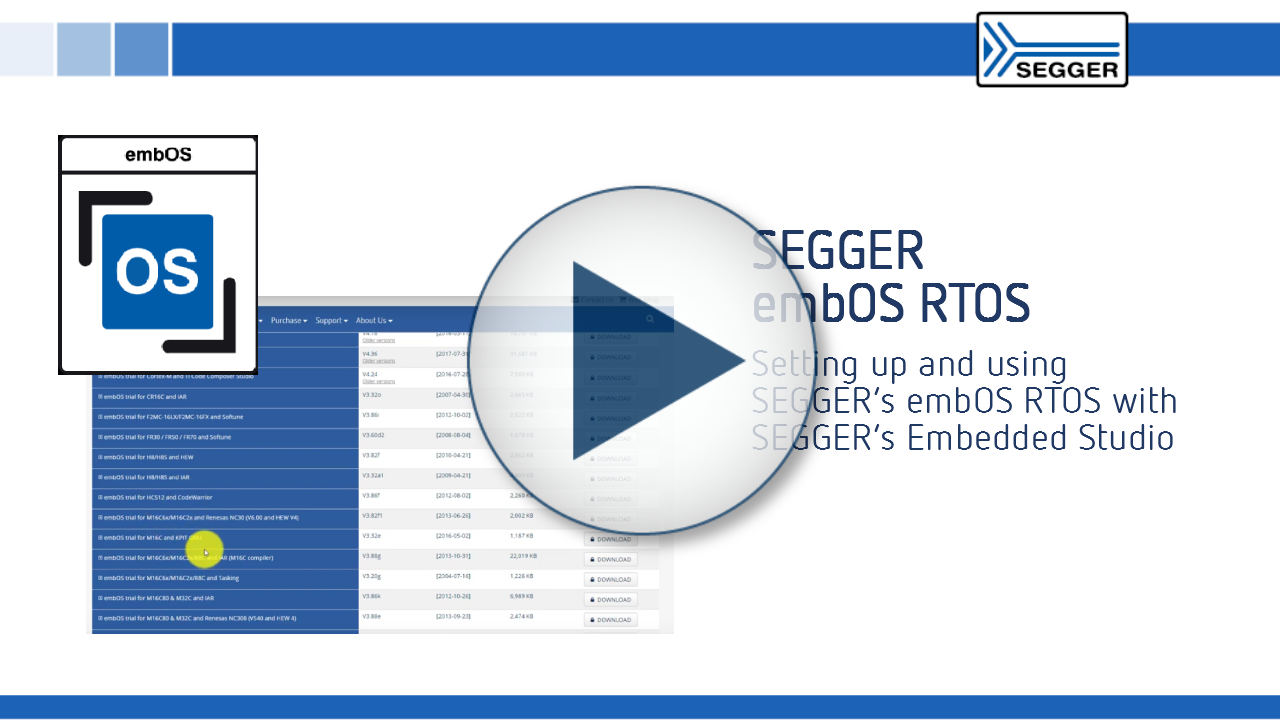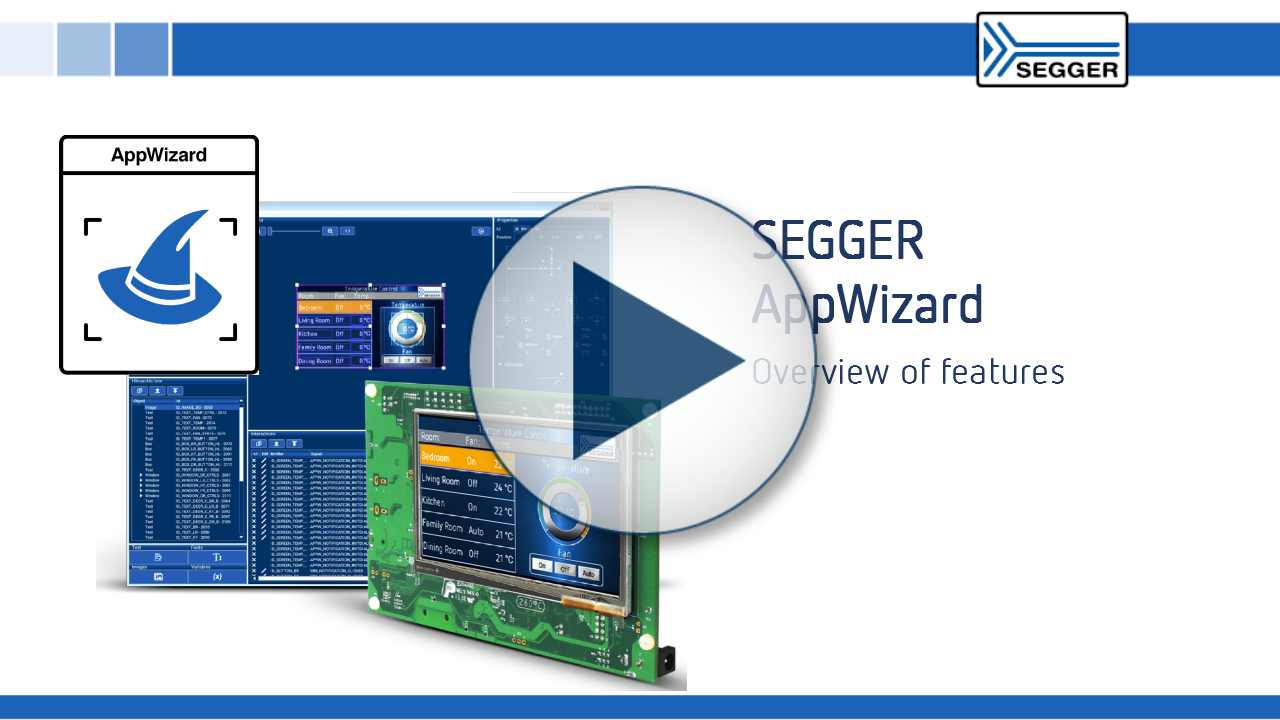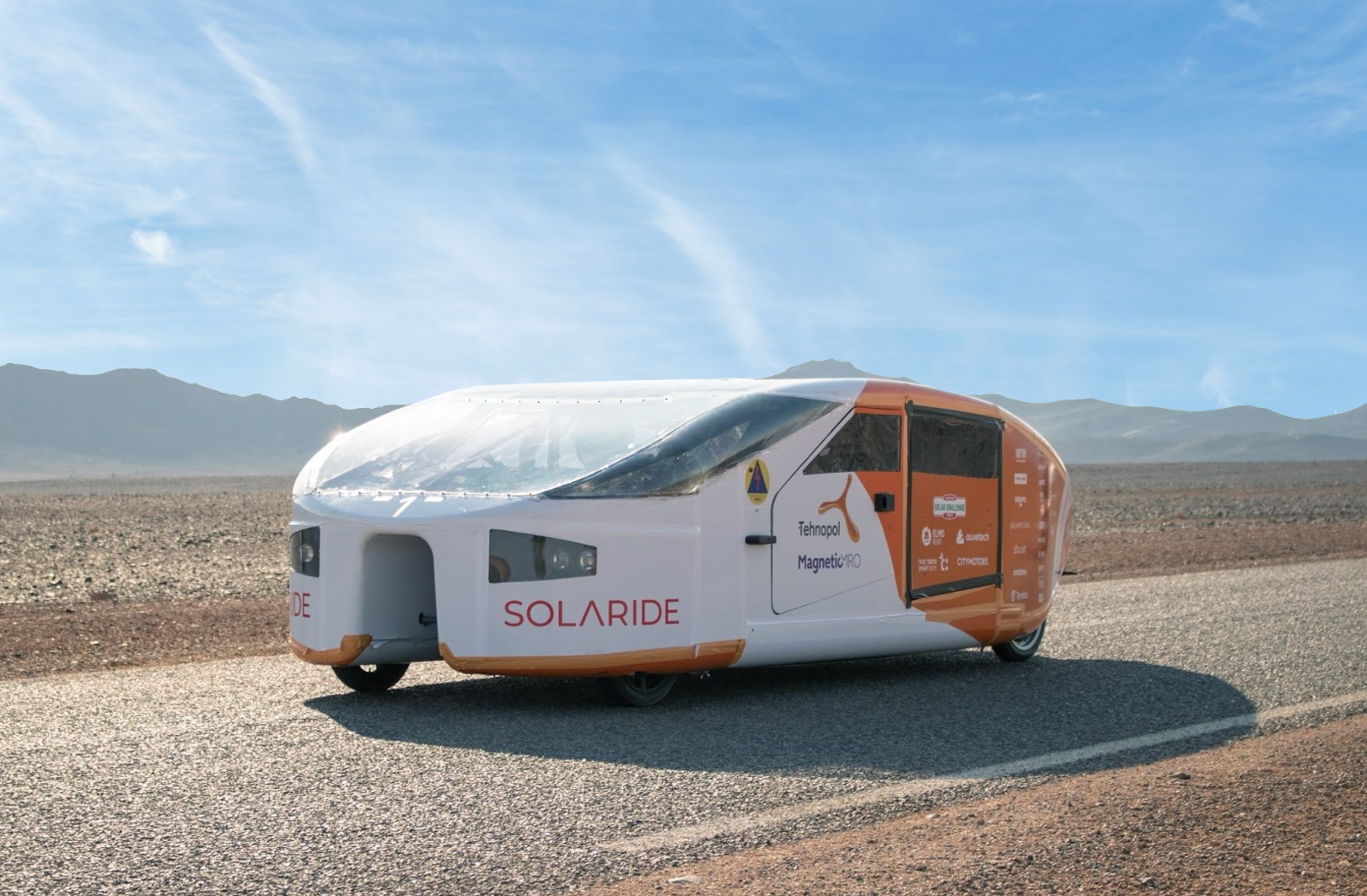
Solaride is an educational program that started from the initiative of two students looking for a way to put their theoretical knowledge into practice. They came up with the adventurous idea to build the first solar-powered car in the Baltics. Quickly the project evolved into a much bigger endeavor, way more than just building a car. At the center of their successful implementation is SEGGER’s embedded software.
You can find more details about the educational program Solaride at the end of this article. Now let’s start and look at their implementation.
When Solaride started building their very first Solar car, they considered SEGGER software right from the beginning.
Engineers in Solaride were interested in embOS, SEGGER’s embedded real time operating system, and emWin, the embedded GUI library, to create a user interface on the car screens. Solaride used emWin to present data to the driver and the copilot of the car. embOS was used in the main control unit, the “brain” of the car, and other control units (see Figure 1, a block diagram of the car’s embedded architecture).
Collecting and processing data
The main control unit is based on a Renesas RX65N microprocessor. It controls all functions in the car. The driver and passenger displays are RX65N Envision Kits. The team uses a CAN bus for most of the communication between modules. The car is driven by Marand high efficiency in-wheel motors. They are controlled by Tritium/Prohelion WaveSculptor22 motor controllers. The solar panels are charging the batteries through Aurora Maximum Power Point Trackers.
The system is equipped with a bunch of sensors to collect an incredible amount of data. Starting with the power system, different voltages and how much energy is stored in the batteries, how much energy is collected by the solar panels, how much energy is consumed. The system also collects data from different temperature sensors. Batteries and other car components such as the engine are monitored as well as ambient temperatures inside and outside the car.
This is just the tip of the iceberg. The system also collects data from the user interface. This includes all the buttons in the car, different sensors that are connected to the gas pedal, the steering wheel, and so on and so on.
The sheer amount of data collected by the system is amazing. All the data is stored in a way, that it can be used for later analysis. This lays the groundwork for adjustments and improvements.
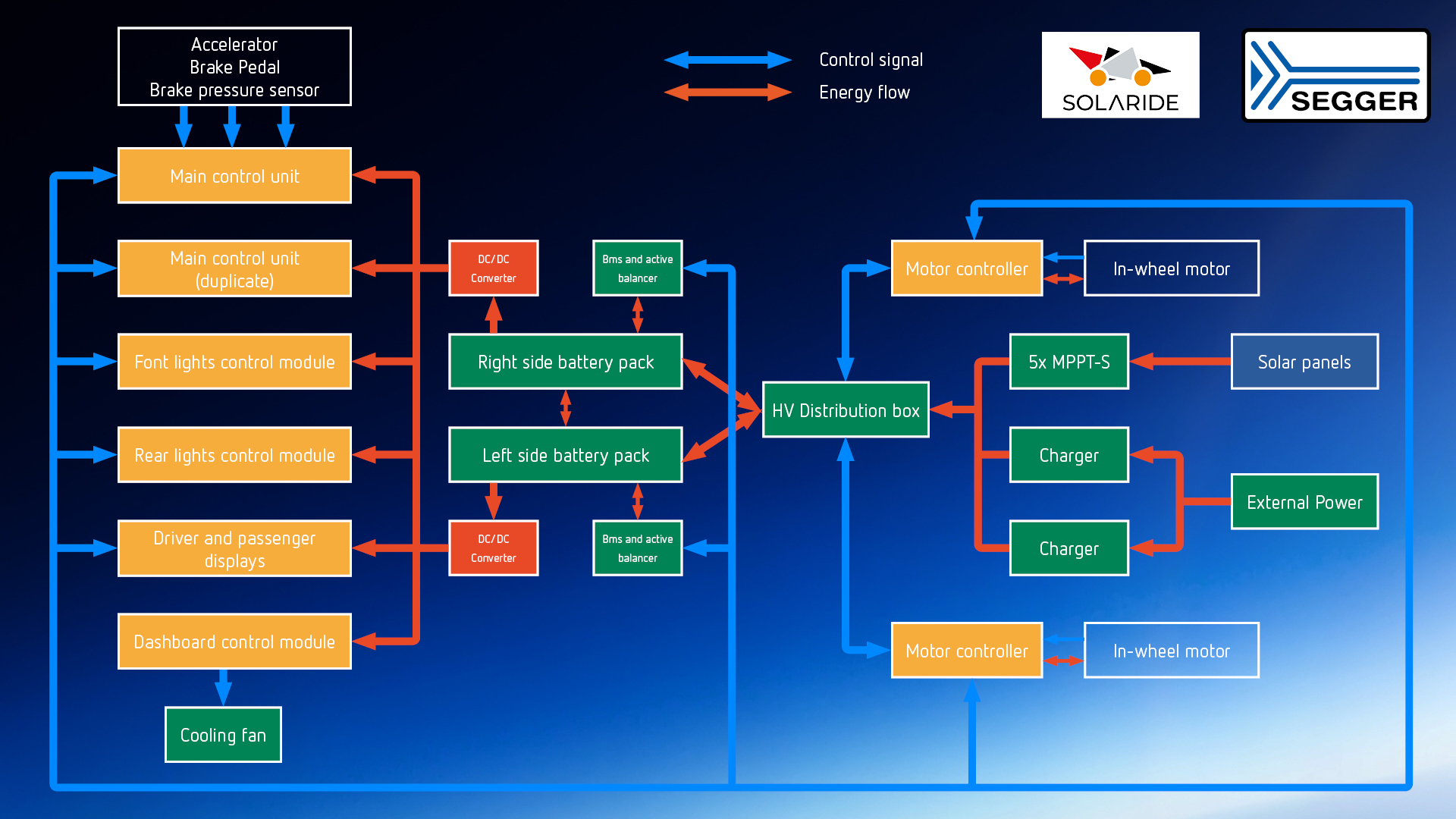
Figure 1: Embedded architecture of Solaride’s racing car. Source: SEGGER.
According to Solaride’s development department the impressive performance of the RX65N, the microcontroller of choice, far exceeded all of their expectations: “It won our hearts with its smooth touch screen features and a massive codebase. It was one of the greatest things that happened to us and it left its competitors well in the dust.”
embOS outperforms competitors
Of course the choice of MCU is just one of the numerous components required for a project as big as this one. The supporting software is incredibly important as well. It is the most important vehicle for utilizing the microcontrollers abilities and adding features, that might not be available in hardware. Solaride invested extra effort to evaluate the best software for their requirements. They compared five real-time operating systems (RTOS) including embOS which became their go-to solution.
embOS turned out to be the most suitable RTOS for their enormous requirements. According to Solaride’s software department “SEGGER’s customer service is also out of this world. If you need help with something, then you will get it very fast and very professionally.”
To understand embOS’ real-time performance better Solaride compared the requirements for a turn signal and a gas pedal. While the turn signal turned out to be a soft requirement, the sensors and controls of the gas pedal had to be monitored and activated 1000 times per second.
From a technical perspective, embOS is instrumental in supporting the requirements of Solaride. Essential features include the freely selectable time resolution, preemptive scheduling, and the ability to assign individual priorities to each task, which means that the response of tasks can be precisely defined according to the requirements of the application. Solaride’s complex environment benefits from embOS features such as the unlimited number of tasks, software timers and all other synchronization and communication primitives like event objects, semaphores, mutexes, mailboxes and queues and, last but not least, sophisticated interrupt handling in very time-critical use cases like motor control.
But even more important for a solar-powered car is that time in which embOS is idle can automatically be spent in power-save mode, minimizing power consumption.
emWin reduces development workload by 10x
What about the driver and passenger displays? For sure Solaride had the option to program a powerful user interface on its own – but without SEGGER’s emWin library the work load in Solaride would have been more than 10 times higher according internal estimations. The reason is very simple: emWin empowers even resource-constrained microcontroller-based systems to run stunning interactive interfaces with a powerful and easy to use API. Solaride’s MCU supplier Renesas, for example, has licensed emWin for all RA and RX microcontrollers due to its resource efficiency and powerful functionality.
Figure 2 shows the general structure of an emWin system. Although emWin is the most resource-efficient graphics library for embedded devices on the market, it is of course not the only one. For space reasons not all features used by Solaride can be described here, so we highlight the most important ones.
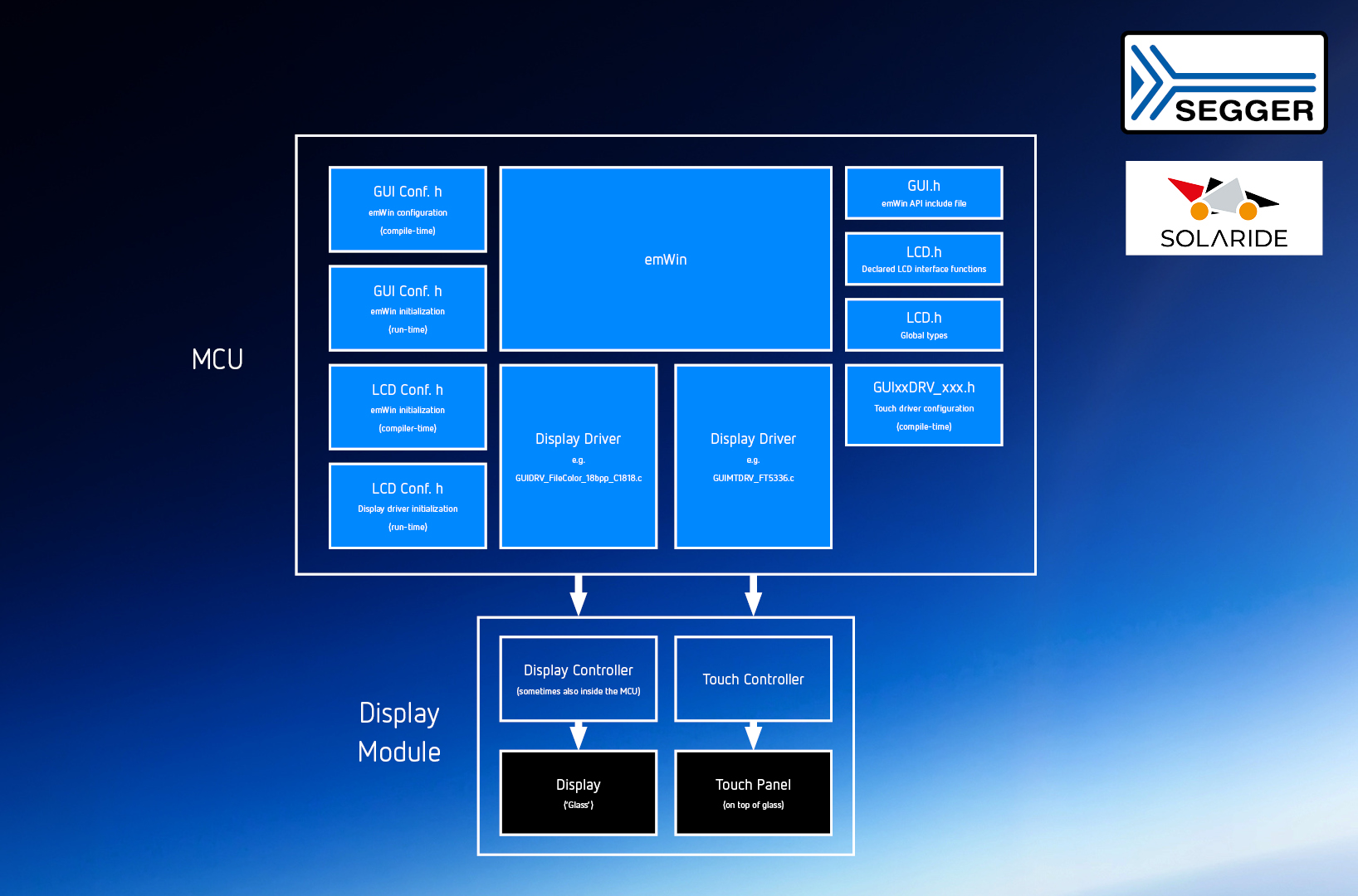
Figure 2: General architecture of an emWin-based embedded system. Source: SEGGER.
As far as we know, there is no tool with a variety of options for scaling images and fonts comparable to emWin. By default, images are converted for the hardware in such a way that the best possible performance is achieved. But it is not always only performance that counts, but also the need to extend resources. That is why emWin offers maximum flexibility.
Variables can be used to realize different things in a GUI: For example, externally changed variables can be used as triggers for arbitrary actions. A concrete application example in automotive is the display of engine rotation speed. The current RPM is displayed on the screen in the form of a slider whose length is proportional to the rotation speed. When a value outside the most efficient range (high torque, low power consumption) is achieved, a trigger is set, which changes the slider color e.g. from green to red.
In addition to the predefined widgets, Solaride could also use other graphic elements such as a potentiometer for displaying e.g. the charge status of the battery from 0 to 100%. Such elements can also be easily implemented using so-called drawings.
Drawings are drawing functions for different elements such as lines, circles, rectangles and in this case pie pieces. You simply specify the center of the circle, the radius, the start and end angles, and the color. The exciting thing is that these values can also be read from variables, so that in the case of the potentiometer, the current position is graphically represented as a smaller or larger pie piece. For this purpose, it is possible to specify both a pre-draw and a post-draw for each individual object. These are actions that are implemented before or after the element is displayed. The possibilities are only limited by the imagination of the GUI designer.
SEGGER’s GUI builder AppWizard makes it even easier
In addition to emWin, Solaride uses AppWizard, Winner of the “Innovator of the Year” award, which is awarded annually by “Design & Elektronik”, organizer of the world-renowned and prestigious Embedded World Conference. AppWizard is a GUI builder that eliminates the need for users to program any code, allowing them to design the interface completely visually. AppWizard generates C source files to work with any target system that has at least 130 KBytes of RAM and 256 KBytes of Flash. A MS Visual Studio simulation project allows debugging the application and adding custom code even if the final target hardware is not (yet) available.
It facilitates the use of all core emWin features, such as rendering animations, language management, widgets, and so on. The core feature of AppWizard is the WYSIWYG (What You See Is What You Get) editor. This editor can be used to create applications that, in addition to displaying the user interface, also interface with other functions of the application. This allows developers to design application interfaces along with their associated interactions and events and immediately see how they will actually look in the application. For this purpose, AppWizard integrates a replay mode for easy testing of created applications in a simulated environment. Simply pressing the F5 key will run the current state of the application, just like debugging in an IDE. SEGGER provides several Videos showing how to use AppWizard to create user interfaces without the need to program even one line of code.
Conclusion
No doubt, Solaride has struck a chord with their solar-powered vehicle to bring sustainability to racing in times of climate change.
SEGGER Microcontroller, itself a climate-neutral company since 2021, has always supported students, teachers, and hobbyists who can use SEGGER’s embedded software for free with its “Friendly Licensing” model.
Also thanks to the RTOS embOS and the graphics library emWin in combination with the GUI builder AppWizard, Solaride was able to develop a highly competitive car that will hopefully soon be very successful in the Bridgestone World Solar Challenge.
About Solaride
Solaride is an educational program that works like a company. It has five departments: marketing, human resources, engineering, logistics and finance. It also has the brightest mentors to help students achieve their goals, an advisory board and a CEO who keeps the wheels rolling.
In November 2021 they started season two with the aim of building a better solar car to be raced in Australia in 2023 at over the world reknown competition Bridgestone World Solar Challenge.
Currently, Solaride brings together almost 100 students from different Estonian universities and schools. The youngest team member is 15 and the oldest 72. During the first season, almost 200 active volunteers participated in this project.
Solaride’s main sponsor is the Estonian Government with Tehnopol. Major sponsors are Magnetic MRO, Auve Tech, the city of Tartu, Elmo Rent and City Motors. Solaride is supported by University of Tartu, Tallinn University of Technology, Estonian University of Life Sciences, Estonian Aviation Academy, TTK University of Applied Sciences and several private companies.
About the Bridgestone World Solar Challenge
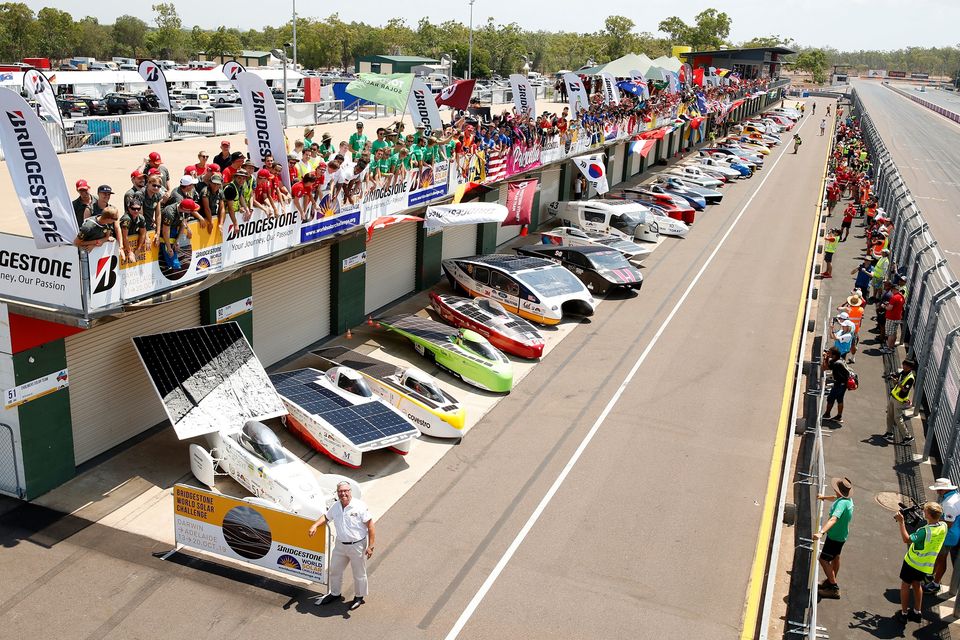
Source: Bridgestone World Solar Challenge.
The Bridgestone World Solar Challenge (WSC) is an international event for solar powered cars driving through the Australian outback and is typically held every two years. The course is over 3,022 kilometres (1,878 miles) long from Darwin, Northern Territory, to Adelaide, South Australia.
The WSC attracts teams from around the world, most of which are fielded by universities or corporations, although some are fielded by high schools. Initially held once every three years, the event became biennial from the turn of the century.
Starting in 2007, the WSC has multiple classes. After the German team of Bochum University of Applied Sciences competed with a four-wheeled, multi-seat car, the BoCruiser (in 2009), in 2013 a radically new “Cruiser Class” was introduced, stimulating the technological development of practically usable, and ideally road-legal, multi-seater solar vehicles.
The idea for the competition originates from Danish-born adventurer Hans Tholstrup. He was the first to circumnavigate the Australian continent in a 16-foot (4.9 m) open boat. At a later stage in his life he became involved in various competitions with fuel-saving cars and trucks. Already in the 1980s, he became aware of the necessity to explore sustainable energy as a replacement for the limited available fossil fuel. Sponsored by BP, he designed the world’s first solar car, called The Quiet Achiever, and traversed the 4,052 km (2,518 mi) between Sydney, New South Wales and Perth, Western Australia in 20 days. That was the precursor of the WSC. After the 4th event, he sold the rights to the state of South Australia.
